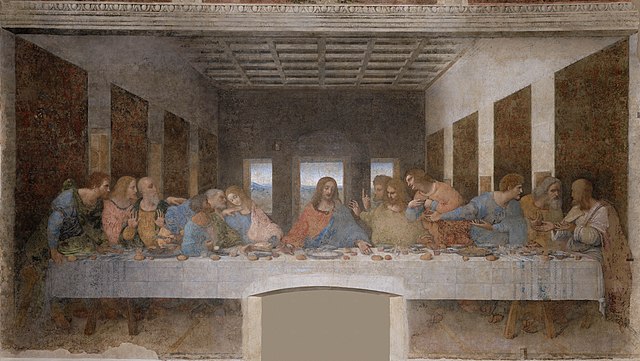At Megiddo prisoners discovered a mosaic floor which had three inscriptions. The first one is of four women’s names in their remembrance. The second is of a woman named Akeptous who is remembered for donating a table for the memory of God Jesus Christ. The Megiddo Mosaic floor dates back to the third century. It is said to be one of the oldest Christian church in the world. A church which is now part of a prison because of the discovery the prison is to be moved. The third inscription has the name of Roman officer who donated the floor with the creator of the floor’s name. The church would be during the times of early Christianity and it hints to the fact that women played a very active role. Akeptous donated the table for the use of the “love feast” or “Agape feast”. The celebration was done by the early Christians in honor of the breaking of bread which Jesus Christ participated in the Last Supper. Many have written about the Agape feasts such as Paul in the Bible, St Ignatius of Antioch, and Pliny the younger.
Hit the link to see the pictures of the floor at Megiddo
http://www.armageddonchurch.com/?Translation_of_Megiddo_mosaics&print
In the catacombs pictures were found depicting early Christians celebrating the “love feast”. In the fresco we see a female figure holding a chalice in the “love feast” she is sitting at the table with all the other males and children celebrating the breaking of the bread and drinking of wine. The early Christians fasted early in the day during the time the said prayers to Christ and later in the day celebrated with a feast. In the Last Supper Jesus celebrates his last meal with his Apostles which is in all four of the Gospels. Many artists have depicted the Last Supper of Jesus with his Apostles but most of the suppers only show men at the table. In early Christianity, women sat at the table with the men as well as children seen in the “Agape fresco”. Leonardo Da Vinci’s Last Supper may show women seated at the table as suggested in the frescos down in the catacombs of the “love feasts” of early Christians. I would point out that evidence shows that women participated in these “love feasts” sitting at the same table as the men. Da Vinci may have understood that women’s place in early Christianity was a more shared and equal role and by placing the feminine looking Beloved Disciple next to Jesus. The Megiddo mosaic floor shows a woman, Akeptous donating a table of which she probably sat around honoring Jesus with men.
Hit the link and you will see the “Agape fresco”
http://upload.wikimedia.org/wikipedia/commons/3/39/Agape_feast_03.jpg
Painting of a feast / Early Christian catacombs / Paleochristian art.
Fresco of female figure holding chalice in the Agape Feast. Catacomb of Saints Pietro e Marcellino (Saints Marcellinus and Peter), Via Labicana, Rome, Itally.
Leonardo Da Vinci Last Supper

http://en.wikipedia.org/wiki/Last_Supper
The Megiddo Mosaic floor has two fishes which are a center picture of one large blue fish and another smaller rose fish. The fish was the symbol of Christianity. The colors blue are opposites in the light spectrum and one fish is larger than the other. One fish that is rose colored could take the dualistic quality of the feminine while the large blue one the quality of male. The symbol of the Ying and Yang, as well as the zodiac symbol of Pisces are similar with the two fish at the center of the mosaic. The Age of Pisces was the time Christianity began and flourished. The symbol of Pisces is two fish which is found in the stained glass windows at Chartres. The fishes at the center of the mosaic may be a reference to the miraculous catch of 153 fish in the net of the apostles. In the Gospel of John chapter 21, it talks about the third appearance of Jesus after his Resurrection. Jesus advises his Apostles to throw their net to the right side to see if they catch any fish and they do so it is the Beloved Disciple who tells them it is Jesus who advised them for at first they did not recognize him.
At the end of the chapter Peter asks about the Beloved Disciple John 21 verse 21-23
“ Peter turned and saw that the disciple whom Jesus loved was following them. (This was the one who had leaned back against Jesus at the supper and had said, “Lord, who is going to betray you?”) When Peter saw him, he asked, “Lord, what about him?”
22 Jesus answered, “If I want him to remain alive until I return, what is that to you? You must follow me.” 23 Because of this, the rumor spread among the believers that this disciple would not die. But Jesus did not say that he would not die; he only said, “If I want him to remain alive until I return, what is that to you?”
The design of the Megiddo Mosaic flow shows a checkerboard pattern resembling a net. The fish symbol is in the center and the net (checkerboard cross pattern) around it in various geometric shapes such as triangles and cubes. The symbolism hints to the miraculous catch which has the mysterious number 153. Many people have thought that the number 153 held a secret message within its number. Augustine Hippo suggests 153 is the sum of the first integers up to the number 17. Some say it is to the Vesica Pisces which is connected to Archimedes square of three in his measurement of a circle. Mary Magdalene has been suggested by writers to be connected in that the Greek spelling of the Magdalene in gematria adds up to 153. It only brings the identity of the Beloved Disciple more possible clues and candidates. We know from the Nag Hammadi texts that Peter and Magdalene had differences. I will point out that in the stories of Magdalene we never hear that she was martyred like Peter and the others.
One more thing makes the Megiddo Mosaic interesting is the double wedding ring design in the mosaic. I own a quilt in this beautiful design. The double wedding ring design shows the interlinking of four circles. The pattern has Akeptous’s name in it.
Megiddo is associated with Armageddon which occurs in Revelations 16:16. It is associated with a massive military buildup at a time during the “end of times”. We are entering the end of the Age of Pisces and entering the Age of Aquarius. The symbol of the fishes are on the oldest Christian church in the world found in Megiddo could be symbolic of the Age of Pisces. It is such a coincidence that in a prison is found an ancient Christian church dedicated to Jesus Christ at the end of Pisces Age. I think the women’s names found inscribed in the church gives great insight on women’s roles in the early Christian church. They have the right to sit at the table in the “love feast” with the men in worshipping Christ. At the end of Pisces Age women all over the world are asking for their rights and a voice in their religions. America’s military has granted women the right to go into combat. Women’s roles in the world have shown they are expanding. Da Vinci’s Last Supper may have been prophetic and historically correct showing that Jesus allowed women an equal place at his table to celebrate the breaking of bread. It is fascinating that during these times that the oldest Christian church found in the world with Jesus Christ name inscribed is found in the place foretold where Armageddon or end of times would begin. What a coincidence that we are at the end of the Age of Pisces (age of fishes) when we find it and the fishes symbol is there and the mysterious number 153 which may have a connection to Mary Magdalene.
http://en.wikipedia.org/wiki/153_%28number%29
http://en.wikipedia.org/wiki/Last_Supper
http://en.wikipedia.org/wiki/Agape_feast
http://en.wikipedia.org/wiki/Armageddon
http://en.wikipedia.org/wiki/Tel_Megiddo
http://www.armageddonchurch.com/?Translation_of_Megiddo_mosaics&print
http://en.wikipedia.org/wiki/Pisces_(astrology)
http://en.wikipedia.org/wiki/153_(number)

